Time to Read:
About 4 minutes
This information explains Level 2 of a general exercise program that will help you with your physical recovery.
This exercise program works the major muscle groups that you use for everyday activities. Regular exercise with resistance (from gravity, elastic bands, or hand weights) will help you:
- Get back to doing your everyday activities.
- Increase your muscle strength.
You should also do other exercises, such as walking, to help build your strength. Your rehabilitation (rehab) therapist may change your exercise program to meet your needs. Talk with your healthcare provider before you start this program.
Exercise Tips
- Dress comfortably. You should wear clothing that won’t limit your movements. You can wear a hospital gown, pajamas, or athletic clothing.
- Breathe in through your nose and out through your mouth. Do the exercise movements when you breathe out.
- Don’t hold your breath while doing any of these exercises. Count out loud during the exercises to keep your breaths evenly paced.
- Do some of the exercises in front of a mirror to keep the right form and posture.
- Your therapist may give you an elastic exercise band (Thera-Band®). Use the band for resistance during the exercises. Follow your therapist’s instructions.
- Move slowly through all movements. Slow, controlled movements will:
- Use more muscle fibers.
- Help you strengthen every part of your muscle.
- Put as much effort into releasing from the movement as you did starting it. Do this especially during strengthening exercises.
- For example, when doing bicep curls, lower your arm as slowly and with as much control as when you lifted it. When you lower your arm in this way, it’s called a “lengthening contraction.” This strengthens the muscle more than just doing an upward curl.
- Stop any exercise that causes you pain or discomfort and tell your physical therapist. You can continue to do the other exercises.
Exercises
Bridging
-
Lie on your back with both knees bent and your feet on the bed. Keep your arms at your sides (see Figure 1).

Figure 1. Lying on your back with your knees bent - Tighten the muscles in your abdomen (belly) and buttocks.
-
Push through your feet and lift your buttocks 3 to 4 inches off the bed (see Figure 2).
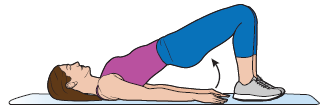
Figure 2. Pushing up through your feet - Hold the position for 5 seconds.
- Then, slowly lower your buttocks back onto the bed.
- Repeat 10 times.
Mini squats
- While standing, hold on to the back of a stable chair, locked bed rail, or handrail in the hallway for balance.
-
Place your feet 6 to 12 inches away from the bed or counter. Your feet should be shoulder-width apart. Keep your back straight (see Figure 3)

Figure 3. Bending your hips and knees - Slowly bend your hips and knees until your knees are at about a 45-degree angle (see Figure 3).
- Hold this position for 5 seconds.
- Slowly straighten your hips and knees until you’re standing upright.
- Repeat 10 times.
Heel raises
- While standing, hold on to the back of a stable chair, locked bed rail, or handrail in the hallway for balance.
- Place your feet about 6 inches apart.
-
Slowly push up onto your toes, lifting your heels off of the floor (see Figure 4).
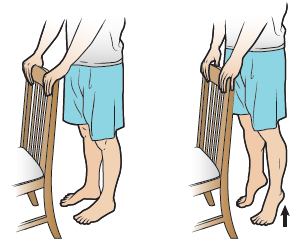
Figure 4. Lifting your heels off the floor - Hold the position for 5 seconds.
- Slowly lower your heels back down to the floor.
- Repeat 10 times.
Standing hamstring curls
- While standing, hold on to the back of a stable chair, locked bed rail, or handrail in the hallway for balance.
-
Bend your left knee, bringing your heel toward your buttocks. Keep your knees even with each other (see Figure 5). Stand tall and don’t bend your hips.
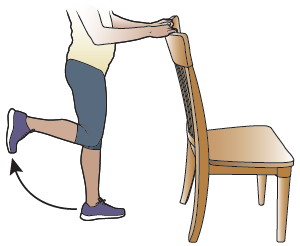
Figure 5. Bending your knee - Lower your foot back down to the floor.
- Repeat 10 times
- Repeat with your right leg.
Standing hip extensions
- While standing, hold on to the back of a stable chair, locked bed rail, or handrail in the hallway for balance.
-
Extend your left leg behind you at the hip, while keeping your knee straight. Stand up straight (see Figure 6). Don’t lean forward.
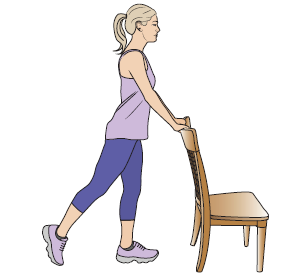
Figure 6. Extending your leg behind you - Hold for 5 seconds.
- Bring your leg forward to rest on the floor next to your other leg.
- Repeat 10 times.
- Repeat with your right leg.
Standing side kicks
- Hold on to the backrest of a stable chair, a locked bed rail, or handrail in the hallway for balance. Stand up straight. Don’t lean to the side or forward.
-
Lift your right leg out to the side while keeping your toe pointed forward (see Figure 7).
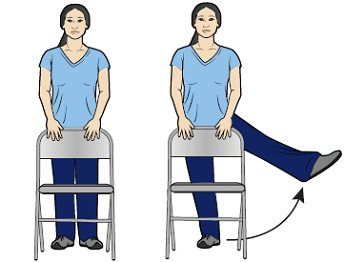
Figure 7. Lifting your leg to the side - Hold for 5 seconds.
- Bring your raised leg back in to meet your other leg.
- Repeat 10 times
- Repeat the exercise with your left leg.
Arm raises
- Sit or stand comfortably with your back straight, shoulders back, and your head facing forward.
-
Raise your arms out to the side, up to the level of your shoulders, while keeping your elbows straight (see Figure 8).
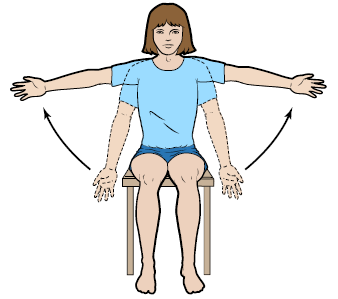
Figure 8. Raising your arms out to the side - Hold for 5 seconds.
- Lower your arms to your sides.
- Repeat this 10 times.
Tricep extensions
- Sit comfortably with your back straight, shoulders back, and head facing forward.
-
Pick up an elastic exercise band with both hands. Position your hands in front of your chest with your elbows raised out to your sides, parallel with the floor (see Figure 9).
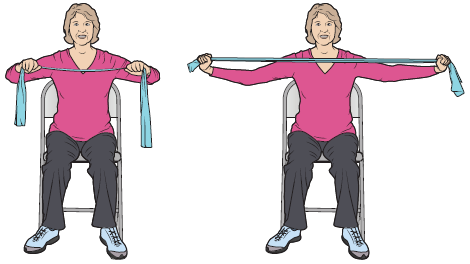
Figure 9. Stretching your arms out using an elastic band - Straighten your elbows fully until your arms are extended out to your sides. Keep the stretched band at chest level (see Figure 9).
- Bend your elbows and slowly bring your hands back in toward your chest while keeping your upper arms raised.
- Repeat 10 times.
Bicep curls
- Sit comfortably with your back straight, shoulders back, and your head facing forward. Keep your right arm straight with your elbow at your side.
-
Place one end of the exercise band under your right foot. Hold the other end of the band with your right hand (see Figure 10).

Figure 10. Bicep curls with an elastic band - With your arm close to your side, bend your elbow, bringing your hand toward your right shoulder (see Figure 10).
- Hold for 5 seconds.
- Lower your hand back down to the starting position.
- Repeat 10 times.
- Repeat with your left hand and left foot.
Scapular retractions
- Sit comfortably with your back straight, shoulders back, and head facing forward.
-
Hold the ends of the exercise band in each hand. Raise your arms to shoulder height, keeping your elbows bent with your hands in front of your chest. Stretch out the exercise band to provide resistance (see Figure 11).
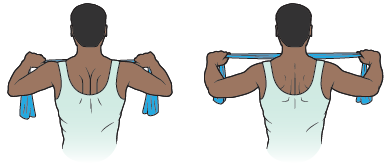
Figure 11. Moving your arms back and squeezing your shoulder blades together - Move your arms back so that they are slightly behind you while squeezing your shoulder blades together (see Figure 11).
- Hold for 5 seconds.
- While keeping your arms raised, bring them forward so that your hands are in front of your chest again.
- Repeat 10 times.
Seated push-ups
- Sit comfortably in a chair with armrests. Keep your back straight, shoulders back, and head facing forward.
- Place your hands on the armrests of the chair. Place your feet shoulder distance apart, right below your knees.
-
Position yourself as if you’re going to stand up (see Figure 12).
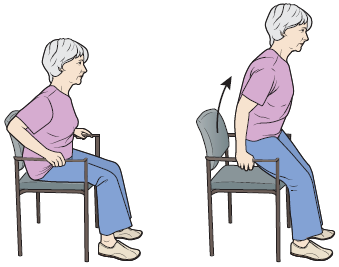
Figure 12. Lifting your body off your seat - Straighten your elbows and lift your buttocks off the seat until your elbows are straight. Lift your buttocks as high as you can, even if you can’t get off the chair completely (see Figure 12).
- Slowly lower yourself back onto the seat of your chair as you bend your elbows.
- Repeat 10 times.